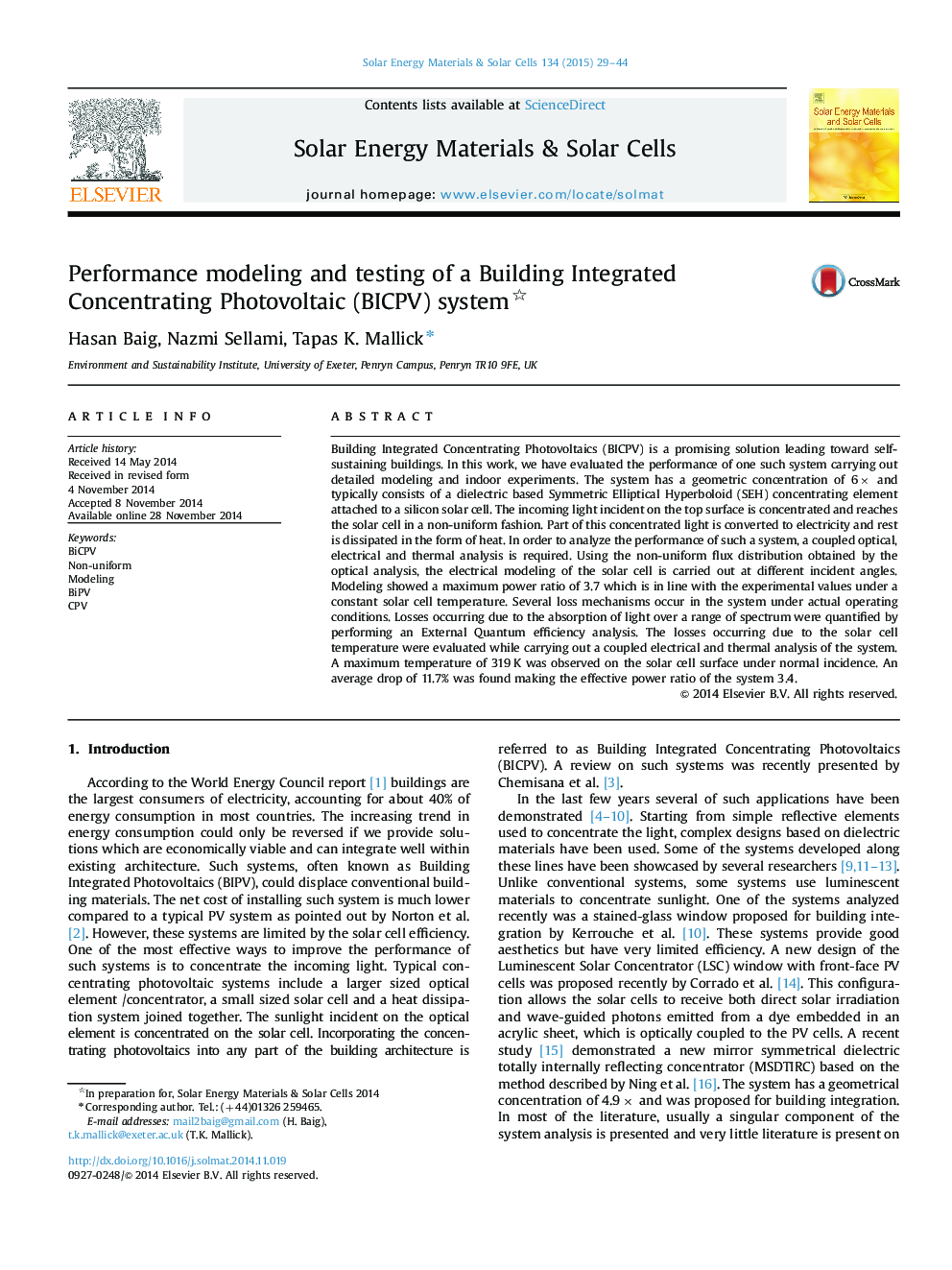| کد مقاله | کد نشریه | سال انتشار | مقاله انگلیسی | نسخه تمام متن |
|---|---|---|---|---|
| 77888 | 49309 | 2015 | 16 صفحه PDF | دانلود رایگان |

• This research article presents the following key points.
• Optical, Thermal and Electrical analysis of a novel 3D dielectric based building integrated concentrating photovoltaic system.
• Indoor characterization of the system.
• Impact of temperature profile on the overall performance.
• Quantification of losses occurring in the system.
Building Integrated Concentrating Photovoltaics (BICPV) is a promising solution leading toward self-sustaining buildings. In this work, we have evaluated the performance of one such system carrying out detailed modeling and indoor experiments. The system has a geometric concentration of 6× and typically consists of a dielectric based Symmetric Elliptical Hyperboloid (SEH) concentrating element attached to a silicon solar cell. The incoming light incident on the top surface is concentrated and reaches the solar cell in a non-uniform fashion. Part of this concentrated light is converted to electricity and rest is dissipated in the form of heat. In order to analyze the performance of such a system, a coupled optical, electrical and thermal analysis is required. Using the non-uniform flux distribution obtained by the optical analysis, the electrical modeling of the solar cell is carried out at different incident angles. Modeling showed a maximum power ratio of 3.7 which is in line with the experimental values under a constant solar cell temperature. Several loss mechanisms occur in the system under actual operating conditions. Losses occurring due to the absorption of light over a range of spectrum were quantified by performing an External Quantum efficiency analysis. The losses occurring due to the solar cell temperature were evaluated while carrying out a coupled electrical and thermal analysis of the system. A maximum temperature of 319 K was observed on the solar cell surface under normal incidence. An average drop of 11.7% was found making the effective power ratio of the system 3.4.
Journal: Solar Energy Materials and Solar Cells - Volume 134, March 2015, Pages 29–44